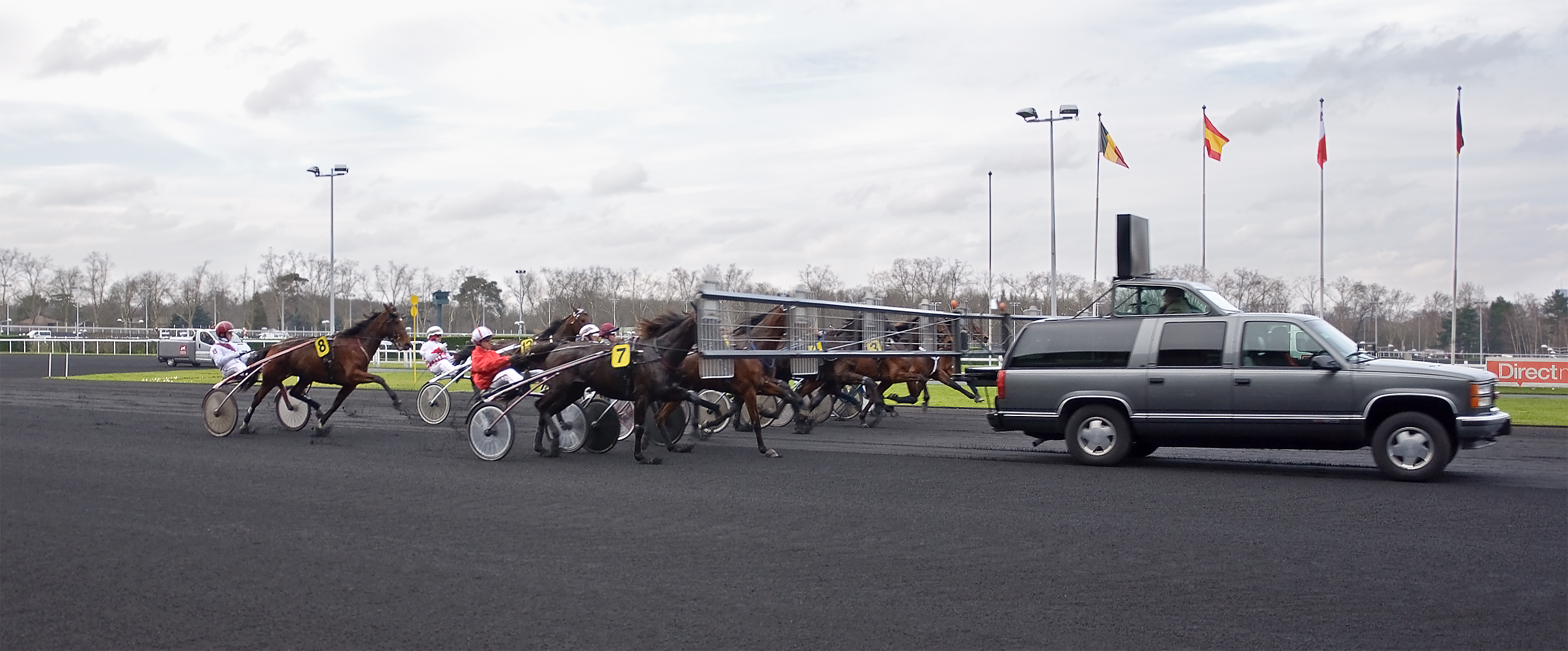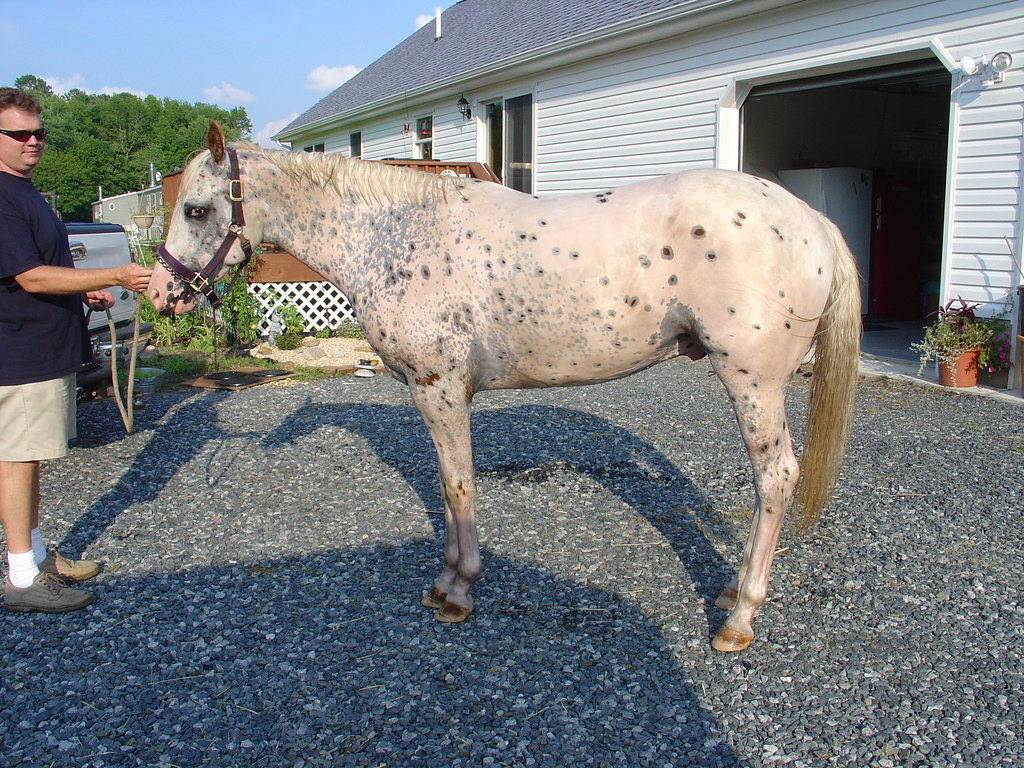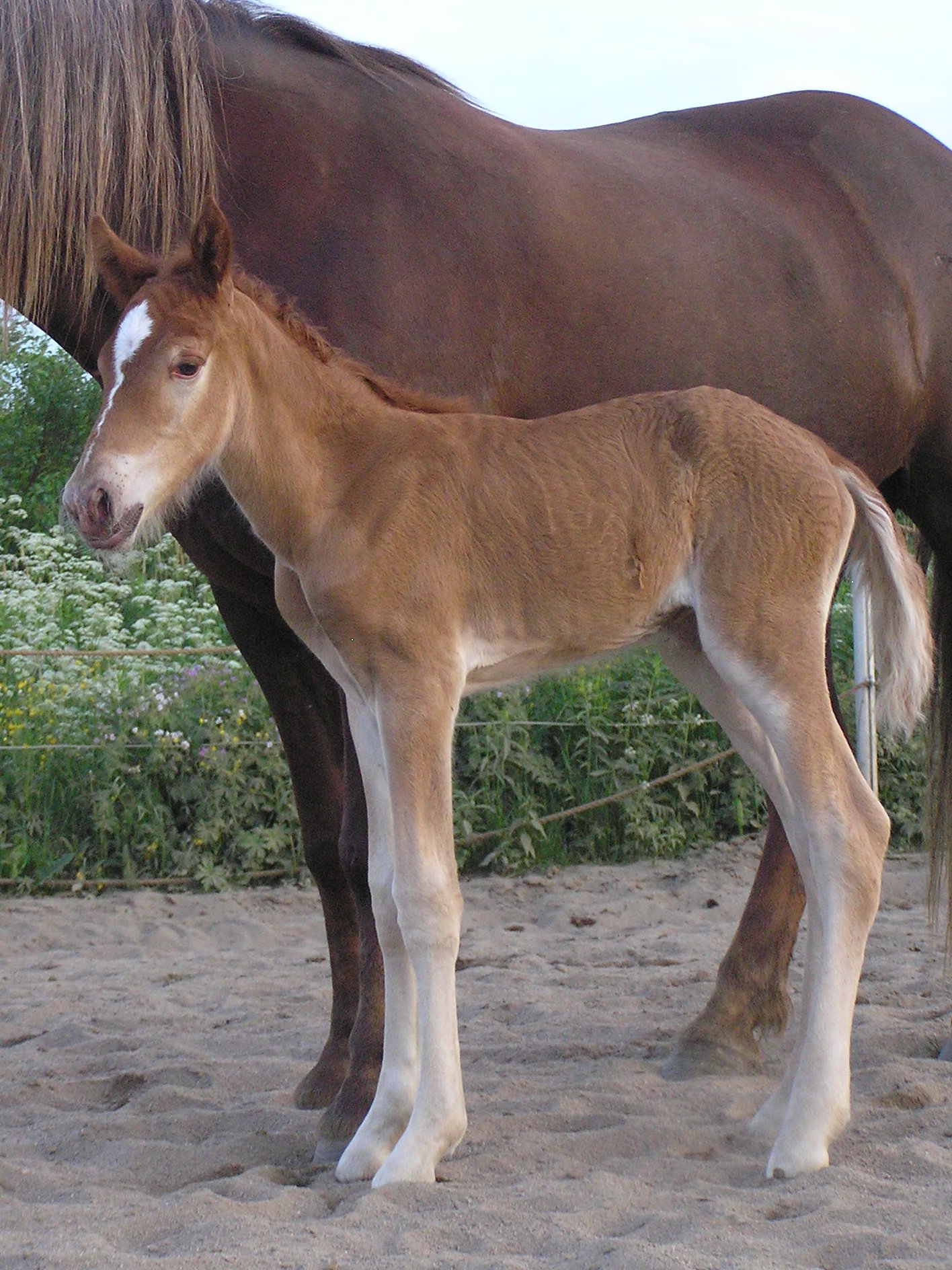|
Gotland Pony
The Gotland Russ or Gotland Pony is an old Swedish breed of pony or small horse. Until the twentieth century it was found only on the small island of Gotland on the south-eastern coast of Sweden. It is now distributed through much of Sweden and is also present in some other European countries and in the United States. The Öland horse from the neighbouring island of Öland was a close relative of the Gotland, but became extinct in the early twentieth century. History The name ''russ'' comes from a now obsolete word ''ross'', which means a riding horse or a charger and it is linked etymologically to the English word ''horse'' (in Old High German this word appeared as ''hros'', and in English a metathesis has switched the places of the /r/ and the /o/, whereas in Swedish /hr/ became /r/, producing ''ross'' or ''russ''.Webster's Seventh New Collegiate Dictionary, 1973. The presence of feral horses on the Baltic island of Gotland is documented from the thirteenth century. From t ... [...More Info...] [...Related Items...] OR: [Wikipedia] [Google] [Baidu] |
DAD-IS
DAD-IS is the acronym for the Domestic Animal Diversity Information System, a tool developed and maintained by the Food and Agriculture Organization of the United Nations as a part of its programme for management of animal genetic resources for food and agriculture. It includes a searchable database of information on animal breeds. Overview The FAO began to collect data on animal breeds in 1982. The first version of DAD-IS was launched in 1996 and the software has been updated several times; the fourth version was launched in 2017. DAD-IS includes a searchable database of information about animal breeds, the Global Databank for Animal Genetic Resources. It contains information on breed characteristics, uses, geographic distribution and demographics; more than images; and tools for generating user-defined reports; and has a multilingual interface and content. It also provides contact information for the national and regional coordinators for the programme. Data is collected ... [...More Info...] [...Related Items...] OR: [Wikipedia] [Google] [Baidu] |
Konik
The Konik or Polish Konik, , is a Polish list of horse breeds, breed of small horse or pony. There are semi-feral populations in some regions. They are usually dun gene, mouse dun or primitive markings, striped dun. The Bilgoray, , of south-eastern Poland is a sub-type of the breed influenced by Arab horse, Arab and Thoroughbred blood; it is close to extinction. The extinct Sweyki or Schweike sub-type of East Prussia contributed to the development of the Trakehner. The word "konik" means 'small horse'. It may be used in a wider sense to describe the Polish Konik and other similar breeds, among them the Hucul pony of the Carpathian Mountains, the Polesian (horse), Polesian of Belarus and the Žemaitukas of Lithuania. Etymology The Polish word ''konik'' (plural ''koniki'') is the diminutive of ''koń'', the Polish word for "horse" (sometimes confused with ''kuc, kucyk'' meaning "pony"). It means 'small horse'. History The Konik is a Polish horse breed descending from v ... [...More Info...] [...Related Items...] OR: [Wikipedia] [Google] [Baidu] |
Horse Breeds
The following list of horse and pony breeds includes standardized breeds, some strains within breeds that are considered distinct populations, types of horses with common characteristics that are not necessarily standardized breeds but are sometimes described as such, and terms that describe groupings of several breeds with similar characteristics. While there is no single definition of the term "breed", it can be defined as a population sharing common ancestry, which has been subjected to similar selection objectives, and which conforms to certain established “breed standards”. Its members may be called ''purebred''. In most cases, bloodlines of horse breeds are recorded with a breed registry. The concept is somewhat flexible in horses, as open stud books are created for recording pedigrees of horse breeds that are not yet fully true-breeding. Registries are considered the authority as to whether a given breed is listed as a "horse" or a "pony". There are also a number of " ... [...More Info...] [...Related Items...] OR: [Wikipedia] [Google] [Baidu] |
Nationalencyklopedin
(; "The National Encyclopedia" in English), abbreviated NE, is a comprehensive contemporary Swedish-language encyclopedia with several hundred thousand articles. It is available both online and via a printed version. History The project was initiated in 1980 when a government committee suggested that negotiations be initiated with various publishers. A loan from the Government of Sweden of 17 million Swedish krona, which was repaid by December 1990, provided funding. In August 1985, in Höganäs became the publisher responsible for the project. The project specifications were for a modern reference work based on a scientific paradigm incorporating gender and environmental issues. Pre-orders for the work were unprecedented; before the first volume was published in December 1989, 54,000 customers had ordered the encyclopedia. The last volume came out in 1996, with three supplemental volumes in 2000. 160,000 copies had been sold as of 2004. Associated with the project ... [...More Info...] [...Related Items...] OR: [Wikipedia] [Google] [Baidu] |
Harness Racing
Harness racing is a form of horse racing in which the horses race at a specific gait (a trot or a pace). They usually pull a two-wheeled cart called a sulky, spider, or chariot occupied by a driver. In Europe, and less frequently in Australia and New Zealand, races with jockeys riding directly on saddled trotters ( in French) are also conducted. Breeds In North America, harness races are restricted to Standardbred horses, although European racehorses may also be French Trotters or Russian Trotters, or have mixed ancestry with lineages from multiple breeds. Orlov Trotters race separately in Russia. The light cold-blooded Coldblood trotters and Finnhorses race separately in Finland, Norway and Sweden. Standardbreds are so named because in the early years of the Standardbred stud book, only horses who could trot or pace a mile in a ''standard'' time (or whose progeny could do so) of no more than 2 minutes, 30 seconds were admitted to the book. The horses have proportiona ... [...More Info...] [...Related Items...] OR: [Wikipedia] [Google] [Baidu] |
Leopard Complex
The leopard complex is a group of genetically related Equine coat color, coat patterns in horses. These patterns range from progressive increases in interspersed white hair similar to Gray (horse), graying or Roan (horse), roan to distinctive, Dalmatian (dog), Dalmatian-like leopard (pattern), leopard spots on a white coat. Secondary characteristics associated with the leopard complex include a white sclera around the eye, striped horse hoof, hooves and mottling, mottled skin. The leopard complex gene is also linked to abnormalities in the eyes and vision. These patterns are most closely identified with the Appaloosa and Knabstrupper breeds, though its presence in breeds from Asia to western Europe has indicated that it is due to a very ancient mutation. Leopard complex patterns Coat patterns in the leopard complex range from being hardly distinguishable from an unaffected coat, to nearly pure white. Unlike most other Pinto horse, spotting patterns, the spotting and especially th ... [...More Info...] [...Related Items...] OR: [Wikipedia] [Google] [Baidu] |
Grey (horse)
A gray horse (or grey horse) has a coat color characterized by progressive depigmentation of the colored hairs of the coat. Most gray horses have black skin and dark eyes; unlike some equine dilution genes and some other genes that lead to depigmentation, gray does not affect skin or eye color. Gray horses may be born any base color, depending on other color genes present. White hairs begin to appear at or shortly after birth and become progressively more prevalent as the horse ages as white hairs become intermingled with hairs of other colors. Graying can occur at different rates—very quickly on one horse and very slowly on another. As adults, most gray horses eventually become completely white, though some retain intermixed light and dark hairs. The stages of graying vary widely. Some horses develop a dappled pattern for a period of time, others resemble a roan with more uniform intermixing of light and dark hairs. As they age, some gray horses, particularly those hetero ... [...More Info...] [...Related Items...] OR: [Wikipedia] [Google] [Baidu] |
Piebald
A piebald or pied animal is one that has a pattern of unpigmented spots (white) on a pigmented background of hair, feathers or scales. Thus a piebald black and white dog is a black dog with white spots. The animal's skin under the white background is not pigmented. Location of the unpigmented spots is dependent on the migration of melanoblasts (primordial pigment cells) from the neural crest to paired bilateral locations in the skin of the early embryo. The resulting pattern appears symmetrical only if melanoblasts migrate to both locations of a pair and proliferate to the same degree in both locations. The appearance of symmetry can be obliterated if the proliferation of the melanocytes (pigment cells) within the developing spots is so great that the sizes of the spots increase to the point that some of the spots merge, leaving only small areas of the white background among the spots and at the tips of the extremities. Animals with this pattern may include birds, cats, c ... [...More Info...] [...Related Items...] OR: [Wikipedia] [Google] [Baidu] |
Cream Gene
The cream gene is responsible for a number of Equine coat color, horse coat colors. Horses that have the cream gene in addition to a base coat color that is chestnut (coat), chestnut will become palomino if they are heterozygous, having one copy of the cream gene, or cremello, if they are homozygous. Similarly, horses with a Bay (horse), bay base coat and the cream gene will be Buckskin (horse), buckskin or perlino. A black base coat with the cream gene becomes the not-always-recognized smoky black or a smoky cream. Cream horses, even those with blue eyes, are not white (horse), white horses. Dilution coloring is also not related to any of the Pinto horse, white spotting patterns. The cream gene (''CCr'') is an Dominance relationship, incomplete dominant allele with a distinct dosage effect. The DNA sequence responsible for the cream colors is the cream allele, which is at a specific Locus (genetics), locus on the SLC45A2, solute carrier family 45 member 2 (''SLC45A2'') ge ... [...More Info...] [...Related Items...] OR: [Wikipedia] [Google] [Baidu] |
Black (horse)
Black is a hair coat color of horses in which the entire hair coat is black. It is not uncommon to mistake dark chestnuts or bays for black. Black horses have dark brown eyes, black skin, and wholly black hair coats without any areas of permanently reddish or brownish hair. They may have pink skin beneath any white markings under the areas of white hair, and if such white markings include one or both eyes, the eyes may be blue. Many black horses "sun bleach" with exposure to the elements and sweat, and therefore their coats may lose some of their rich black character and may even resemble bay or seal brown, though examination of the color of hair around the eyes, muzzle and genitals will determine color. Some breeds of horses, such as the Friesian horse, Murgese and Ariegeois (or Merens), are almost exclusively black. Black is also common in the Fell pony, Dales pony, Ostfriesen and Alt-Oldenburger, Kladruber, and Groningen. Visual identification When identifying ... [...More Info...] [...Related Items...] OR: [Wikipedia] [Google] [Baidu] |
Chestnut (coat)
Chestnut is a hair coat color of horses consisting of a reddish-to-brown coat with a mane and tail the same or lighter in color than the coat. Chestnut is characterized by the absolute absence of true black hairs. It is one of the most common horse coat colors, seen in almost every breed of horse. Chestnut is a very common coat color but the wide range of shades can cause confusion. The lightest chestnuts may be mistaken for palominos, while the darkest shades can be so dark they appear black. Chestnuts have dark brown eyes and black skin, and typically are some shade of red or reddish brown. The mane, tail, and legs may be lighter or darker than the body coat, but unlike the bay they are never truly black. Like any other color of horse, chestnuts may have pink skin with white hair where there are white markings, and if such white markings include one or both eyes, the eyes may be blue. Chestnut foals may be born with pinkish skin, which darkens shortly afterwards. Chest ... [...More Info...] [...Related Items...] OR: [Wikipedia] [Google] [Baidu] |
Bay (horse)
Bay is a equine coat color, hair coat color of horses, characterized by a reddish-brown or brown body color with a black point coloration on the mane (horse), mane, tail (horse), tail, Pinna (anatomy), ear edges, and lower legs. Bay is one of the most common coat colors in many horse breeds. The black areas of a bay horse's hair coat are called "black points", and without them, a horse is not a bay horse. Black points may sometimes be covered by white horse markings, markings; however such markings do not alter a horse's classification as "bay". Bay horses have dark skin – except under white markings, where the skin is pink. Genetically, bay occurs when a horse carries both at least one dominant Agouti gene and at least one dominant Extension gene. While the basic genetics that create bay coloring are fairly simple, the genes themselves and the mechanisms that cause shade variations within the bay family are quite complex and, at times, disputed. The genetics of dark shades ... [...More Info...] [...Related Items...] OR: [Wikipedia] [Google] [Baidu] |






